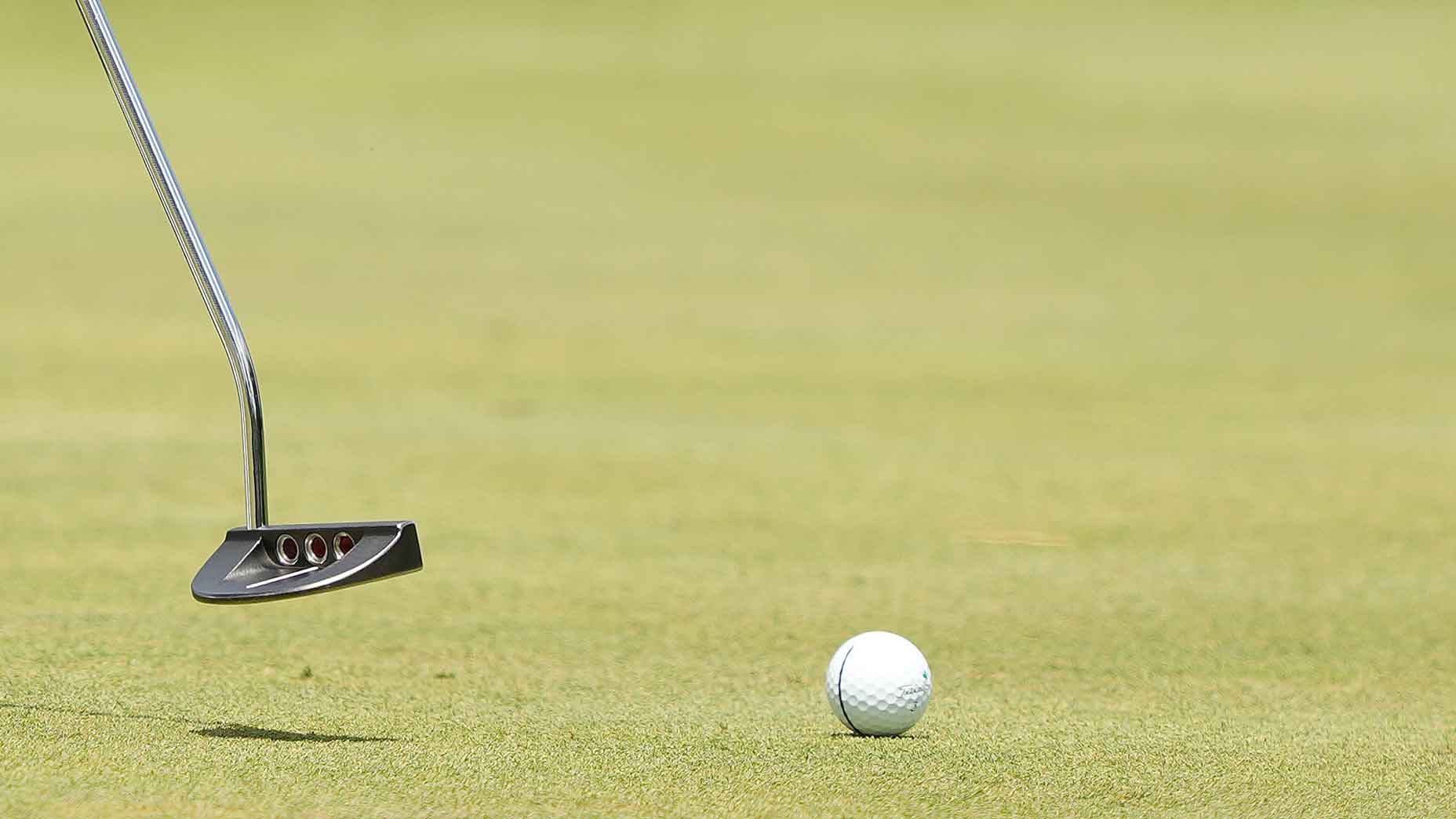Nick Piastowski

Getty Images
Eric DeKarski, while moving his putter back and then through, seemingly knows one thing he won’t do upon contact with the ball.
Pull it.
And how confident is he in his method?
“This will help you stop pulling your putts, guaranteed,” he says.
DeKarski, who teaches out of Ballamor Golf Club in New Jersey, is talking on a video recently posted to his Instagram page, and the subject is a popular one. Players can have their line right. Players can have their speed down. But a pull ruins it all.
DeKarski thinks he can help. Below is his video. Below that are some notes.
In the video, DeKarski listed three parts to his technique to stop pulling.
1. Ball position
“First, worry about your ball position,” he said in the video. “Make sure it’s a little bit more middle and not too far forward.”
2. Forward press
“Next,” he said on the video, “add a little forward press with your hands.”
3. Wrist movement
In the video, DeKarski asked for no wrist movement, and to check for it, he had a drill. He said it was his best putting drill.
“Place a golf ball in your inner forearm,” he said in the video.
“If you do a good stroke, it will stay in there. If you cast or release too early, the ball will come out.”
In the video, DeKarski then made a putt.
Is the method worth at least looking at? For sure. The author, a 14-handicap, tried it. I placed the ball “a little bit more middle and not too far forward.” I added forward press — in full disclosure, I’ve used this before and I’m not a proponent. I put the ball in between my inner forearm and the grip.
I hit 10 putts and saw no pulls.
Is the technique guaranteed? That’s a big word, of course. It’s effective, though. The moves eliminate ways to pull. One thing to add from DeKarski’s video — watch his putter stroke. He took the club back at a distance that seemed to be based on the length of the putt, hit the ball, and his follow-through was short, a move pro Cam Smith employs. (You can read more about that here and here.)
Let’s keep the putting conversation going. Last Sunday, GOLF Top 100 teacher Kellie Stenzel wrote an article headlined “Try this 5-step plan to become a better putter,” and you can read that story by clicking here or by scrolling below.
***
Being a great putter requires great technique and a bit of structured practice. Once that gets dialed in, you can practice with focused drills that’ll help you control distance and become better at reading greens.
So what are the keys? Let’s take a look.
Good setup
It all starts with having a good setup, where your posture allows your arms to hang so that your eye line is relatively over the ball and parallel to the aim line. A great training aid to develop this is simply a putting mirror.
Stroke path
Next, I suggest working on your stroke path, which can be practiced with a swing arc or on a putting mat. Ideally, the putter face will stay perpendicular to a curving path.
A good friend of mine, fellow GOLF Top 100 Teacher Stan Utley, explains the stroke path as going “straight back and straight through on an inclined plane,” which makes it easy to understand for even the most novice golfer. But to accomplish this, you must stay relatively still during your stroke, which will help improve path and distance control.
Equipment
Another factor in becoming a great putter is your equipment — so make sure you have a putter that fits both you and your stroke.
Oftentimes, putters are too long if they’re bought off the shelf, making it difficult to get into good posture — which can negatively impact your stroke path.
Practice distance control
Once your technique is dialed in, I suggest first focusing on distance-control drills — with a three-foot increment drill being one of my favorites, as I use it all the time in my clinics.
Simply set balls in three-foot increments, starting with the shortest putt and working your way back. The goal is to control your stroke length and distance, so take a practice stroke before each shot, trying to make your stroke as realistic in size as possible.
You should try to roll the first putt (the shortest one) within two-to-three feet of the hole, so focus on your backstroke length to control distance.
As you move back, the stroke size should increase. When this happens, the natural falling speed of the putter increases, leading to the ball rolling farther. The ability to regulate the backstroke length for different distances will pay dividends with distance control — which will help avoid three-putts.
Practice stroke size
Another critical aspect of becoming a good putter is adjusting to uphill and downhill changes.
To practice this, pick one putt that’s sloped uphill, and one putt that’s sloped downhill, and just practice going back and forth a number of times in a row until you two-putt or better. The feels that can be developed controlling your stroke size can make a huge difference on the course.
Remember that putting is a learnable skill, and that, with some commitment to practicing it, you can develop the confidence to lower your putts per round — thus improving your scores.
If you’re looking for more short game and putting tips, I suggest checking out Parker McLachlin, aka the Short Game Chef, who has tons of tips to help improve your game near the green.
“>

Nick Piastowski
Golf.com Editor
Nick Piastowski is a Senior Editor at Golf.com and Golf Magazine. In his role, he is responsible for editing, writing and developing stories across the golf space. And when he’s not writing about ways to hit the golf ball farther and straighter, the Milwaukee native is probably playing the game, hitting the ball left, right and short, and drinking a cold beer to wash away his score. You can reach out to him about any of these topics — his stories, his game or his beers — at nick.piastowski@golf.com.






